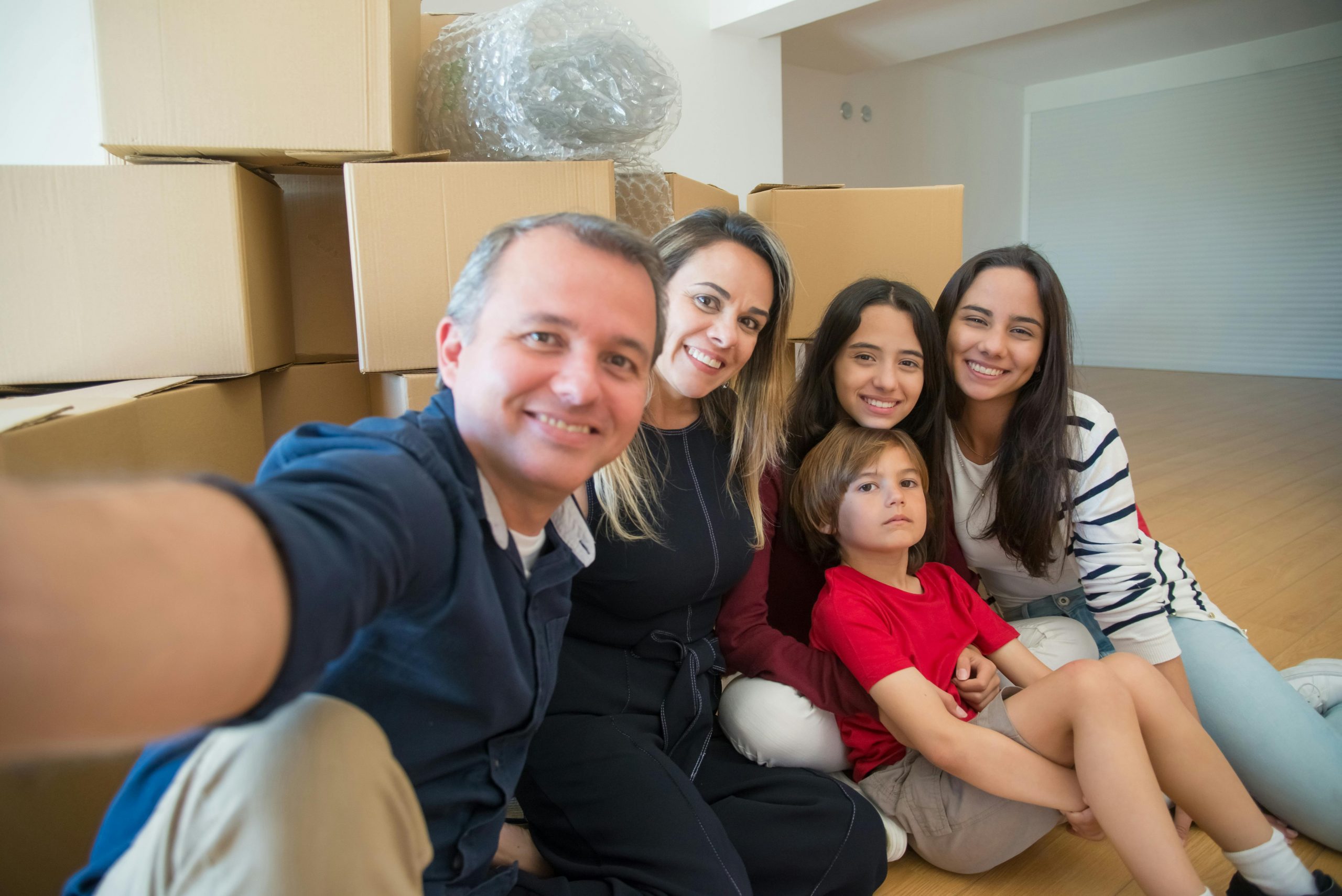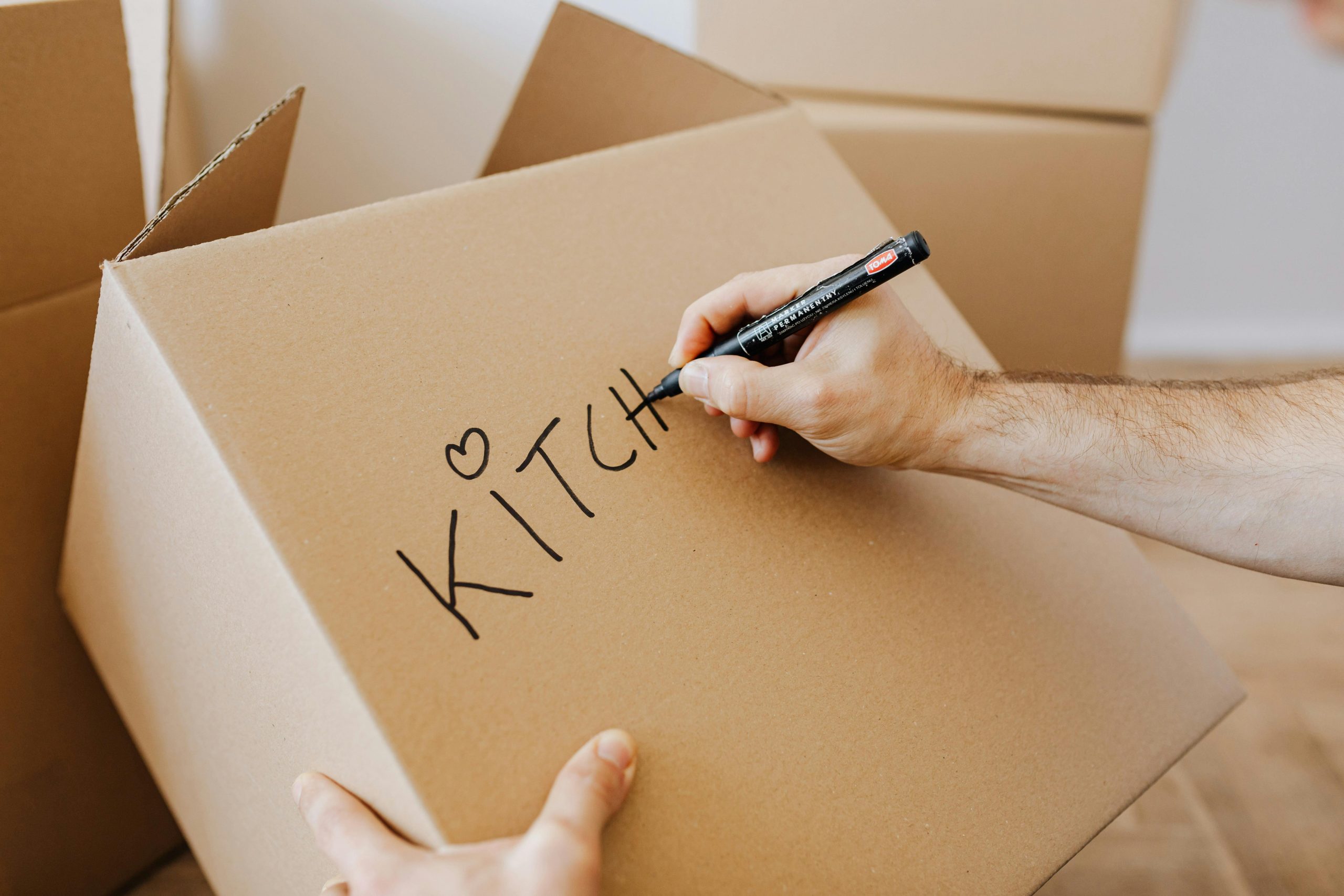

Packing for a move is always stressful, but when you have kids or pets, it can feel like an impossible task—especially if you’re down to just three days. The key is to stay organized, plan strategically, and prioritize what matters most. In this guide, we’ll walk you through a step-by-step approach to packing efficiently while keeping your little ones and furry friends safe and calm.
Why Moving With Kids or Pets Changes Everything
When you’re packing alone, it’s mainly about getting boxes ready, labeling, and protecting fragile items. Add kids or pets into the mix, and suddenly you’re managing schedules, feeding times, naps, tantrums, and playtime.
Some common challenges include:
- Disruptions in routine – Kids may feel unsettled, and pets may become anxious.
- Limited space – Toys, pet gear, and extra supplies take up room.
- Safety concerns – Sharp objects, cleaning supplies, and fragile boxes need to be kept out of reach.
Recognizing these challenges early helps you develop a realistic strategy to pack efficiently without overwhelming yourself—or your family.
Day 1: Plan, Sort, and Gather Supplies

How should I start packing with kids or pets around?
The first day sets the tone for a smooth move. With only three days, planning carefully is essential. Start by creating a master plan. Write down every room, assign priorities, and separate items into “pack now” and “pack later” categories. Knowing what must be tackled first will reduce stress and prevent last-minute chaos.
Steps to get started:
- Make a room-by-room list: Go through each room in your home. Identify which items are non-essential (seasonal clothes, extra dishes) and which are essentials (daily-use kitchenware, kids’ favorite toys).
- Declutter as you go: Quickly decide what can be donated, sold, or thrown away. This reduces the number of boxes you need to pack and helps streamline the process.
- Set priorities: Focus on packing items that are not immediately needed. Essentials can be packed closer to moving day.
Gather packing supplies
Having the right materials on hand saves valuable time. Stock up on:
- Boxes of various sizes – small for fragile items, medium for kitchenware, large for lightweight clothes or linens.
- Packing tape and dispensers – for quick sealing of boxes.
- Markers – to label boxes clearly by room and content.
- Bubble wrap, packing paper, and newspapers – for fragile items.
- Storage bins or reusable containers – great for toys, pet items, or clothes.
Set up a staging area
Designate a corner of your home as a packing zone. This area will store:
- Packed boxes ready to move – stacked and organized.
- Items that must remain accessible – kids’ toys, bedding, and pet supplies.
Having a staging area keeps your living spaces functional and prevents clutter from piling up everywhere.
How to involve kids safely
Even young children can help if given age-appropriate tasks:
- Ask them to sort toys or clothes into labeled bins.
- Have them decorate boxes with stickers or write their names on their belongings.
- Create a “keep accessible” box for things they will need during the move, like favorite toys, books, or bedtime essentials.
Tips for pets on Day 1
Pets can become anxious when they notice boxes and movement around the house. Keep them calm by:
- Preparing a pet essentials kit with food, water, medications, collars, leashes, and favorite toys.
- Creating a safe zone away from packing chaos, such as a quiet room with a crate, bedding, and familiar toys.
- Maintaining their normal routine as much as possible—feeding and playtimes help reduce stress.
Day 2: Pack Strategically Room by Room
Should I pack everything at once or room by room?
Packing room by room is far more manageable than trying to tackle the entire house at once. It keeps things organized and ensures nothing is left behind. Begin with non-essential items and move on to essentials closer to moving day.
Non-essential items to pack first:
- Books, DVDs, and extra kitchenware
- Seasonal clothing and shoes
- Decorative items, picture frames, artwork, and collectibles
Essential items to pack last:
- Daily kitchen utensils, dishes, and appliances
- Kids’ clothing for the next few days
- Important documents, passports, and valuables
How to keep kids busy while packing
Keeping kids occupied prevents interruptions and accidents:
- Set up a “fun station” with coloring books, puzzles, or movies.
- Arrange playdates, babysitters, or family helpers if possible to free up time.
- Allow short breaks to check in and give attention, so kids feel included rather than ignored.
Packing tips for pets
- Introduce moving boxes gradually to avoid triggering anxiety.
- Stick to regular feeding times and routines to give pets a sense of stability.
- If possible, have a friend or pet sitter supervise pets while you move heavy items or pack large furniture.
Day 3: Pack Essentials, Label Everything, and Prepare for Moving Day

What should I focus on the final day?
The last day is about packing essentials, double-checking boxes, and labeling clearly to make the move efficient.
Checklist for Day 3:
- Pack kids’ overnight bags with clothes, toiletries, and comfort items.
- Pack pet overnight essentials: food, medications, toys, bedding, and leashes.
- Finish packing the kitchen—dishes, appliances, and fragile items.
- Use color-coded labels or markers for each room to simplify unloading.
How to label effectively
Proper labeling prevents confusion during unpacking:
- Label boxes by room and category: e.g., “Kitchen – Plates & Glasses”
- Mark fragile items clearly with bold letters
- Number boxes and keep a matching packing list for easy tracking
How to Keep Kids Safe During Packing
Safety is critical when kids are around boxes, tape guns, and bubble wrap:
- Keep sharp objects and heavy boxes out of reach
- Avoid leaving open boxes with small toys or packing materials on the floor
- Store chemicals and cleaning supplies securely
- Consider temporary childproofing for areas where heavy packing is happening
How to Keep Pets Calm During a Quick Move
Pets are sensitive to stress and can become anxious during a fast move:
- Maintain familiar routines as much as possible
- Create a quiet, secure space with bedding, toys, and water
- Use calming aids such as pheromone sprays or anxiety wraps if recommended by your vet
- Consider boarding pets temporarily on moving day if the environment will be chaotic
What to Pack in a “Moving Day Survival Kit” for Kids and Pets
For kids:
- Snacks and water bottles
- Favorite toys, books, or stuffed animals
- Change of clothes and pajamas
- Portable games, tablet, or entertainment
For pets:
- Food and water bowls
- Leash, collar, and harness
- Medications
- Favorite toys or blanket
How to Stay Organized When Time is Tight
Prioritize Essentials Over Non-Essentials
When you only have three days to pack, the most important step is to focus on what truly matters. Essentials such as daily kitchen items, kids’ clothing, toiletries, and pet supplies should be packed last so they remain accessible until moving day. Non-essential items—like seasonal clothing, extra decor, and seldom-used kitchenware—should be packed first to free up space and reduce clutter. By distinguishing between “must-have” and “can-wait” items, you save time and prevent unnecessary stress during the move.
Declutter Quickly to Reduce Overload
Decluttering is crucial when time is limited. Go through each room and identify items you haven’t used in the past six months, broken items, or things that no longer serve a purpose. Donate, recycle, or discard these items immediately. Decluttering not only reduces the number of boxes you need to move but also simplifies unpacking in your new home, giving you more space for the items that really matter.
Use Color Coding for Efficient Packing
Color coding your boxes is an easy and highly effective organizational tool. Assign a color to each room and mark all corresponding boxes with colored tape or labels. This visual system allows anyone helping you—family, friends, or movers—to know exactly where each box belongs. Color coding also saves time when unpacking and ensures that nothing gets misplaced or overlooked.
Stack and Store Boxes Smartly
How you stack boxes can make a big difference in both safety and efficiency. Place heavier boxes at the bottom and lighter boxes on top to prevent damage to fragile items. Keep high-priority boxes, such as children’s or pets’ essentials, in easily accessible areas so you won’t have to dig through layers of boxes to find them during the first few days in your new home.
How to Pack for a Move in 3 Days Without Stress
Communicate Clearly With Your Family
Moving is stressful, but clear communication can help reduce anxiety. Explain the moving plan to your children and involve them when possible. Let them know what is happening, what they can expect over the next three days, and what role they can play. Understanding the process helps children feel more secure and reduces tantrums or confusion.
Take Breaks to Avoid Burnout
Packing for hours on end without rest leads to fatigue, frustration, and mistakes. Schedule short breaks throughout the day to stretch, hydrate, and check in with your kids and pets. These moments allow everyone to recharge, which helps maintain focus and patience during an intense, fast-paced move.
Stay Flexible and Accept Setbacks
Even with a clear plan, things rarely go perfectly. Boxes may be misplaced, schedules may shift, and kids or pets may become fussy. Accepting that setbacks are part of the process keeps you calm and allows you to adapt without feeling overwhelmed. Flexibility is key to successfully managing a short-term move.
Ask for Help When Needed
Don’t hesitate to rely on friends, family, or neighbors. Extra hands can watch children, manage pets, or help lift heavy boxes. Sharing responsibilities lightens the load and reduces stress for everyone involved.
How to Unpack Quickly With Kids and Pets
Set Up Zones for Kids and Pets First
When you arrive at your new home, start by creating dedicated zones for children and pets. Unpack their essentials first, including clothing, bedding, favorite toys, and food. Having a familiar space ready helps them feel comfortable while you continue unpacking the rest of the home.
Unpack Room by Room for Efficiency
To avoid chaos, unpack systematically, focusing on one room at a time. Start with bedrooms, bathrooms, and the kitchen—areas essential for daily living. By completing one space before moving to the next, you maintain order and can better manage both kids and pets during the process.
Keep Survival Kits Accessible
Continue using the moving day survival kits for kids and pets until routines normalize. Having easy access to snacks, comfort items, or toys ensures that children and pets remain happy and calm during unpacking. It also prevents constant interruptions and allows you to work more efficiently.
Common Mistakes to Avoid When Packing Fast
Failing to Label Boxes
Not labeling boxes properly is one of the quickest ways to create confusion during unloading. Always mark boxes clearly with the room and general contents to save time and reduce stress.
Overpacking Boxes
Boxes that are too heavy can break, crush fragile items, or cause injuries. Pack wisely, balancing weight and size, and consider using smaller boxes for heavy items like books or dishes.
Ignoring the Needs of Kids and Pets
Moving is a family event, and ignoring the needs of children or pets can lead to meltdowns and anxiety. Ensure their comfort and include their essentials in accessible boxes.
Neglecting Downtime
Even with a short timeline, everyone needs breaks. Failing to plan rest periods leads to burnout, irritability, and mistakes. Schedule small windows of downtime for yourself, your kids, and your pets to maintain energy and morale.
Final Thoughts
Packing for a move in three days with kids or pets is challenging, but it’s possible with the right strategy. The keys are organization, prioritization, and keeping everyone’s needs in mind. By planning your rooms, labeling boxes, creating survival kits, and maintaining routines for your family and pets, you can survive—and even thrive—during a rushed move.
Remember, the goal isn’t perfection; it’s efficiency and safety. With careful preparation, you’ll unpack your new home with minimal stress and plenty of energy left to enjoy it.